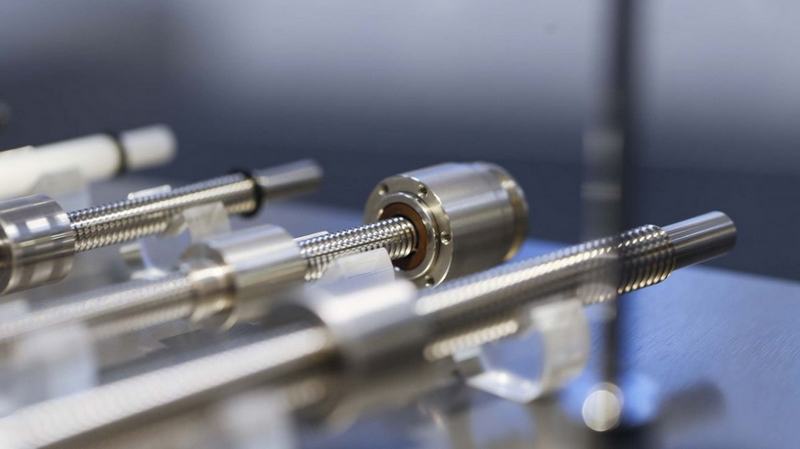
Unmanned cylindrical grinding processes for small series
The internationally active MPS Micro Precision Systems AG (MPS) consistently relies on grinding processes for demanding high-precision components in IT02 tolerance fields. With a total of seven Studer grinding machines, the company has a level of cylindrical grinding expertise that is second to none. Thanks to automation and process optimization, even medium-sized series can be flexibly manufactured unmanned in 24h/7d. Future projects and prototypes can be brought to market more quickly thanks to a flexible production cell.
With more than 400 employees, MPS is a special kind of "hidden champion". As early as 1969, the company RMB (Roulements Miniatures Bienne SA), from which MPS emerged, was developing components for the Apollo mission. With 250 employees, Biel is the largest location of the MPS Group and has over 140 lathes, milling machines, grinding machines, polishing machines and eroding machines.
Consistent investments in grinding machines
Michael Bazzan (Production Manager): “With seven Studer grinding machines, we currently have a high grinding capacity to produce high-precision components. The grinding machines are tailored to our varying batch size spectrum, which ranges from single part production to 25,000 pieces per year for some references.»
In line with the range of batch sizes, three of the seven Studer machines are currently equipped with an automatic loading system. The focus below is on the Studer S33 for the production of ball screws and on a Studer S21 in the area of a flexible production cell (Flex Cell).
Flexible manufacturing cell for prototyping
Didier Noirjean – (Flex Cell Manager): «The Flex Cell was recently integrated into the cylindrical grinding production as a self-sufficient manufacturing unit in order to set up grinding processes for prototypes and new developments without having to intervene in production. Thanks to this flexible production cell, we are significantly faster from development to the finished component. The decisive factor with the Studer S21 was that it can be converted very quickly and flexibly set up for different components. Eccentric grinding processes can also be implemented with the S21. In this respect, the Studer S21 is perfectly designed for our requirements.»
While the Flex Cell is mainly concerned with prototypes, series parts are processed on the other six Studer machines. These include high-precision ball screws.

A look at the Studer S21, which does its job in the flexible production cell (Flex Cell). Here a prototype component (pump rotor made of aluminum) is precision ground. Speaking of flexibility: Eccentric grinding processes can also be produced without any problems.
Core competence ball screws
The smallest ball screws have a ball diameter of 0.8mm. All components are developed and manufactured by MPS in-house, including the balls. The larger series of threaded spindles with Gothic threads are manufactured on a fully automated Studer S33.

Ball screws for high-precision applications
M. Nercide: “We are busy with these precision threaded spindles in research and development, among other things. The expertise in extremely smooth and precise positioning of lens groups developed by MPS Microsystems enables the company to offer high-performance alignment systems for optical components such as zoom and laser beam focusing systems.»
Systems adapted to customer requirements
MPS Microsystems Miniature Ball Screws, or Ball Screws, are manufactured entirely from stainless steel and are positioned via double nuts that allow for fine adjustment of end play. These spindles, which are often made to measure, guarantee almost frictionless movement thanks to the high precision of their ground threads. Speaking of customization, a wide variety of custom ballscrew options are available.
J. Grosjean: “Applications like this require maximum precision and positioning accuracy – 100% backlash-free. And this is exactly where our spindle systems have their strengths. We grind a so-called Gothic thread profile in the tightest tolerance fields, which allows us to reduce the radial and flank play to zero.»
Gothic thread: grinding from the solid
The Gothic thread form is ground directly from the hardened blanks. A macro was developed together with Studer for these Gothic thread forms. With this macro, the grinding parameters can be adapted very quickly to the respective threaded spindles.
U. Weyermann (Area Sales Manager, Fritz Studer AG): “The Studer S33 used here is an external cylindrical grinding machine with a turret wheelhead. Specifically, the grinding headstock used here has two external grinding wheels. One of the two discs is used for thread profiling, the second disc generally for external cylindrical grinding.»
Handling system for unmanned production
In order to manufacture the medium-sized series economically, the Humard company, in cooperation with MPS and Studer, developed a flexible handling system for the automatic loading and unloading of the workpieces.
M. Bazzan: "The decisive factor in the design of the handling system is that it can be quickly adapted to different workpiece geometries because our lot sizes are variable."
Typical thread grinding process
The Studer S33 needs less than a quarter of an hour for the complete machining of a threaded spindle with a diameter of 8 mm and a length of 120 mm. The thread is both roughed and finished with the same grinding wheel. During the entire grinding process, the grinding wheel is dressed several times in the µ range. This means that more than 1000 threaded spindles of this size can be ground with one grinding wheel.»




